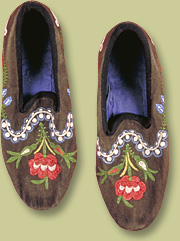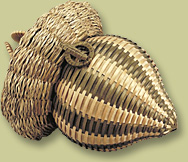|
|
Arrival of Strangers - The Last 500 YearsEconomyAs Europeans settled permanently, Aboriginal people became freight packers, gold miners, commercial hunters and fishermen, railway workers and cattlemen. Aboriginal people across Canada began struggling to establish new economies while maintaining their traditions and connection to the land. With European settlement increasing, Aboriginal people's access to land was restricted. Because prices for fur, gold, fish and other resources changed with market forces, it became increasingly difficult for Aboriginal populations to support themselves by harvesting plants and animals. Industrialization and mass production reduced Aboriginal people's skin clothing, basketry, and even snowshoes, to tourist crafts. Some local Aboriginal economies gradually shut down, forcing people away from the land. Aboriginal people who left their communities combatted racism. Before 1960, Status Indians were not citizens, and it was very difficult for them to get credit for businesses or mortgages. By the mid-1900s, most Aboriginal people were still struggling to be part of the national and global economies without surrendering their identity. |

